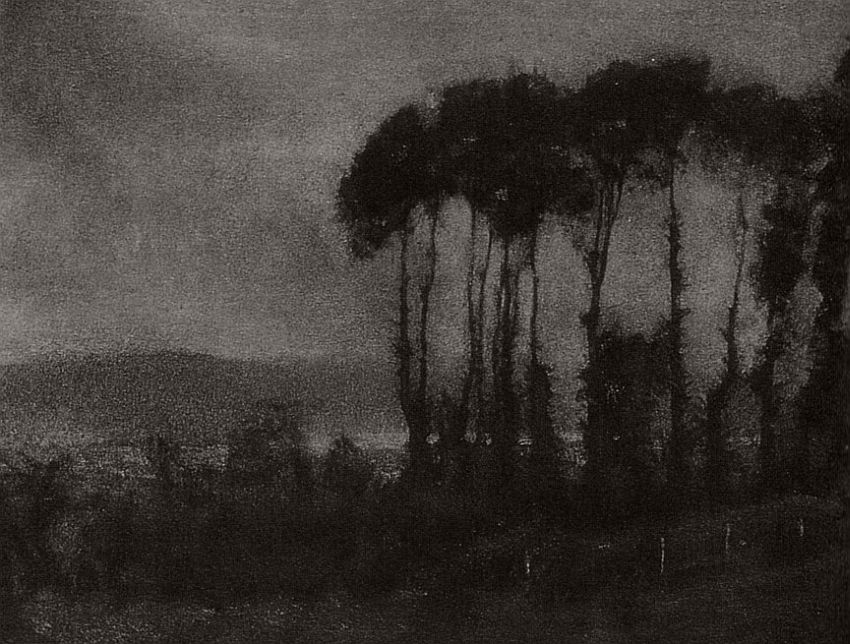Throughout the history of photography, the style and genre of images produced in particular time periods have often been in correlation to particular art movements which artistically reflect on society and what is both right and wrong with it. It is important to note that, each art movement is not labelled or ‘coined’ until the movement has fundamentally passed and all creative areas or arguably all aspects of life are assessed before the term is distributed. Only in retrospect and careful analysis we are given the ability to deem a certain era with a specific term for a genre of images.
First and foremost, artists began the photographic critiquing of the late 1800s and the early 1900s, in which the movement was recognized as “pictorialism”. The key characteristics that prove as motifs throughout the movement is the conveying of emotion within an image, with the movement spreading internationally. Pictorialism surged as citizen travel was made easier, giving people the opportunity to explore and document images, however, a predicament that faced this movement was the argument of, is the purpose of the images produced for art or for documentation reasons? Although the movement did not follow precise procedures, there were two primary methods. The first being that subjects and compositions were designed to bring a sense of fantasy or visual cohesion separating themselves from the documentation of every day life. Secondly, photographers were beginning to manipulate the chemical process itself much in the way that a painter would control their materials. Gum bichromate was very popular at the time and photographers started applying brush strokes and other manipulations of the process to achieve a painter-like quality to the photographs.

For example, Robert Demachy was a French photographer who took this measure to an extreme, giving himself an individual status. Another instance of a recognizable photographer is Clarence Hudson White who includes females into his romantic black and white landscapes. Overall, the images produced are either very romantic or somber and melancholy, demonstrating that there is a high level of emotion emitted through this movement which christened photography as an art.

Photo – realism or straight photography is a genre of art that surged during the twentieth century and was instantly recognizable as it attempted to capture an image as realistic as possible in comparison to the true visual. This art movement formed the foundation for vital photography techniques that still exist within contemporary formats, for example, documentary photography and photojournalism. Famous photographers renown from this era are such as Ansel Adams and Edward Weston, two names who are frequently referred to.


The work of these two men are still being studied and referred to today, showing the influence and importance that the realism era accumulates in the modern era. There is a lot of focus upon nature and the natural beauty that Mother Earth provides, giving these photographs an organic and authentic feel about them, which is enhanced further by the black and white colour scheme.
Thirdly, the modernism era loomed between 1910-1950 and gave a sharp focus and an emphasis on formal qualities, exploiting, rather than obscuring, the camera as an essentially mechanical and technological tool. Modernist works frequently take the gritty world of industry as their theme as we discover through the work of Claude Cahun who includes her own personal difficulties within her photographic work, and although her work can often be treated as a direct challenge to realism, as a surrealist, she was producing work under the generic category of modernism. Personally, this was my favourite art movement that I briefly studied as people had the opportunity to challenge and combat the political world as well as their own personal conundrums much like Claude Cahun. In this very reflective era, there was opportunity to create a style for yourself, however, in the modern era, it seems to be a case of how can somebody creatively form a tribute to a previous artist with the original idea.


Postmodernism is characterized by self-conscious and deliberate intertextuality. One of the best-known photographers who played with simulacra is Cindy Sherman. Sherman should be termed a performance artist who restages images from mass media. Concentrating on how women were represented by movies, she had herself photographed in a series of small black and white photographs called “Film Stills” during the late 1970s. None of these theatrical re-presentations can be traced back to any actual movie but all remind the viewer of movies they have seen or have heard of and evoke the construction of women in the 1940s and 1950s. Sherman is what can be called a “post-feminist,” or an artist who takes up feminist concerns, not from a political and activist perspective but from a theoretical stance.


As a photography student looking to create personally and politically impeding images, I ask myself “what art movement am I a part of?”. In a post post-modernism era with the likes of Donald Trump, Theresa May and Kim Jong-Um in positions of high political power, I wonder to myself what fuels the art being produced currently. Perhaps, as I’ve mentioned, due to the amount of art produced in the past, modern artists are “revisionists” due to the hardship of trying to create something original without using an idea or concept already produced.





